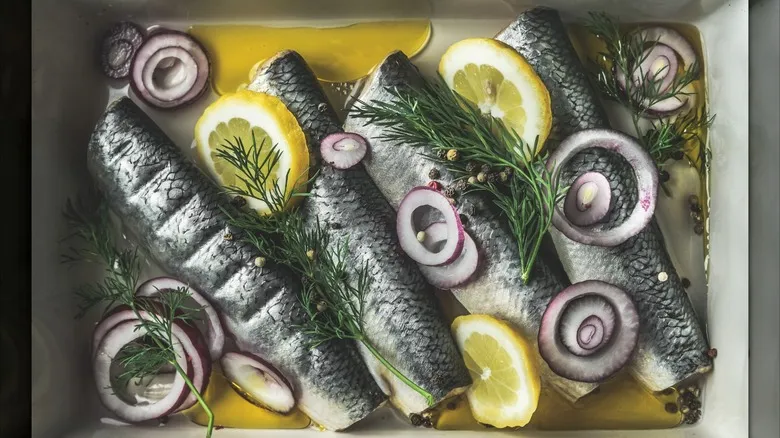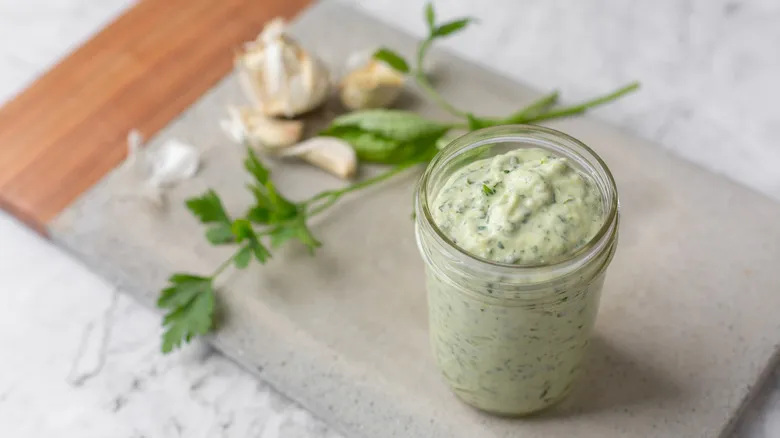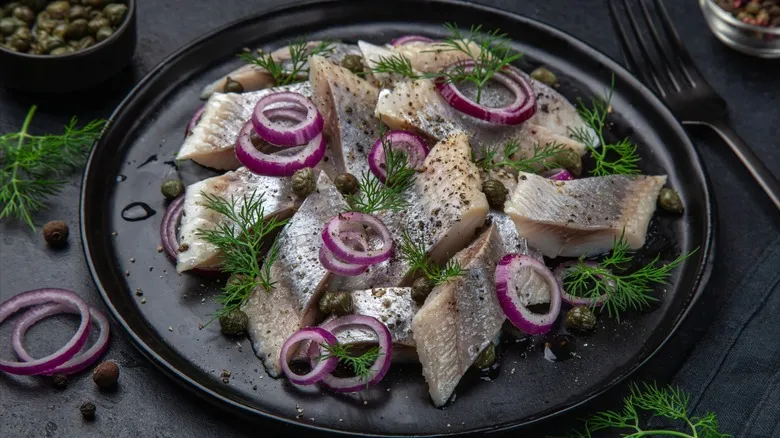Pickled herring is more than just fish and vinegar

If you haven't had the chance to try it, pickled fish might not seem like the most appetizing option. However, dismissing Swedish pickled herring so quickly would be a mistake. Just as you can enhance pickled eggs with various ingredients, the Swedish tradition of pickling herring incorporates a wide range of flavors that transform the dish into something truly delightful. While it's nearly impossible to pinpoint the exact origins of specific recipes—given the long history of pickled herring—today's variations undoubtedly reflect generations of refinement and adaptation, solidifying its status as a culinary staple.
One of the most fascinating aspects of pickled herring is the diverse array of flavors that can be infused during the pickling process. The brine not only serves as a preservative for the fish but also acts as a medium for other flavors to meld in. Traditional recipes often include vegetables like leeks, carrots, onions, and garlic, along with herbs and spices such as allspice and dill. Essentially, if an ingredient seems like a good match for enhancing regular herring, it’s likely to work well in pickled herring too, making this briny dish far more versatile than it may initially appear.
Recommended

The Evolution Of Chewing Gum From Tree Sap To Hubba Bubba

9 Facts You Didn't Know About McDonald's Szechuan Sauce

The Origin Story Of Lasagna Might Not Start In Italy

What Is Green Goddess Dressing, And Why Is It Popular Again?
Next up

